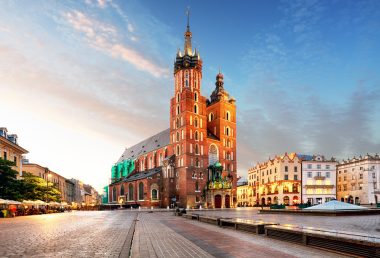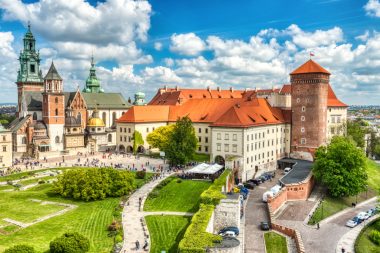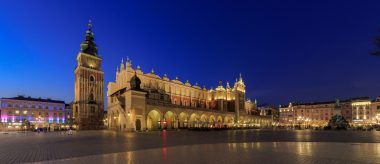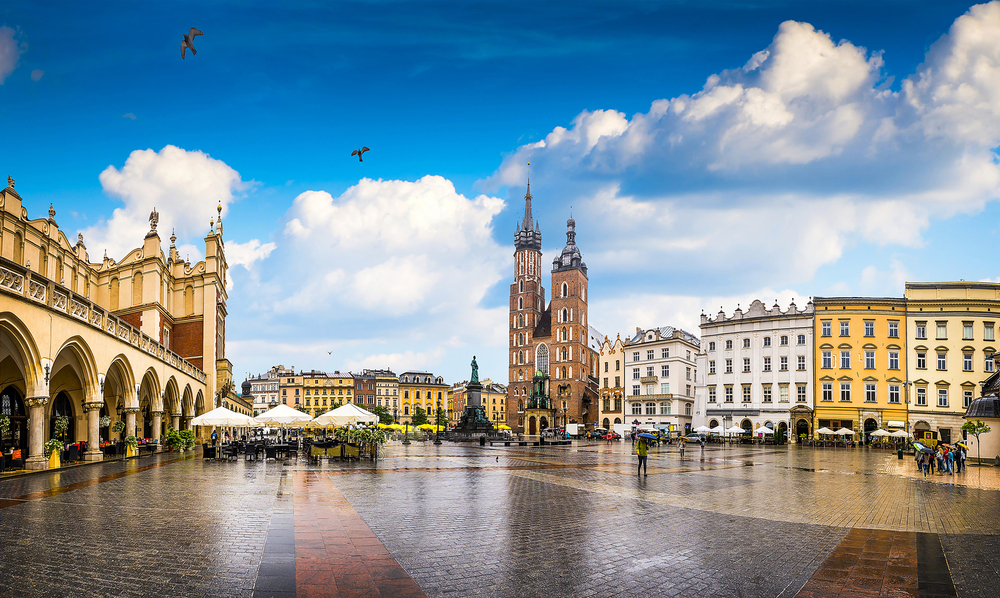Krakow in southern Poland is the second largest city in the country after the capital Warsaw . It is one of the most historically important cities in Europe and still shines today in the splendour of the Renaissance, Gothic and Art Nouveau, but also other epochs of architecture since the High Middle Ages.
Krakow is also home to the largest square in Europe. This was founded in the Middle Ages and covers 40,000 square meters.
As you can imagine, Krakow also has a lot to offer culturally and was even chosen as the European Capital of Culture in 2000. In addition, numerous myths and legends are rooted in this city. The most famous of these is certainly the legend of the Wawel Dragon, whose home is said to have been located under the hill of the same name in the city. Some sources report that he is said to have lived there before the city was founded. In front of the cave there is now a sculpture of the dragon that can even breathe fire.
Sights in and around Krakow
St. Mary’s Church

The church with the two unequal towers watches over the main square in the old town of Krakow. At the end of the 13th century, it was built on the foundations of a Romanesque church. It belongs to the Gothic period and is a classic example of Polish architecture of this period.
While the portal on the outside is particularly eye-catching, the basilica is richly decorated inside.
Since the 14th century, an hour bell has been rung by hand every hour on the hour and the Hejnał, a Polish triumphal signal, has been blown. However, this breaks off in the middle of it to remind us that the tower keeper was hit by an arrow at this point during the Mongol attack of 1241. This, too, may only be a legend.
There is also a legend surrounding the towers that is supposed to explain their inequality: According to this, they were built by two brothers who wanted to outdo each other. Fearing that the tower of the other brother could tower over the tower, which was already structurally completed, one man killed his brother.
Wawel Hill

Once home to a dragon, it is said, the hill is now home to the magnificent Wawel Castle.
Built on the remains of an early medieval castle, it used to be the residence of Polish kings and currently functions as a national museum.
A visit to Wawel Hill is like walking through the centuries: Romantic, Gothic, Renaissance and Baroque meet there.
The castle itself was built in the 14th century in the Gothic style. Various buildings, defenses and towers are also part of the area. After further architectural changes, however, the palace was largely destroyed by fire at the end of the 16th century and had to be rebuilt.
Below the complex there are numerous caves in the karstified hill, which were already used by early humans and today offer an interesting sightseeing destination.
Auschwitz Birkenau
Outside Krakow, the site of the former Auschwitz concentration camp stands like a huge memorial to all the horrors of World War II. A visit to this complex is recommended not only for history buffs.
The museum, as well as the complex itself, promises a deep insight into the horrors of this bygone time and often the abandoned places speak for themselves. Watchtowers, barbed wire and residential barracks create an eerie atmosphere. Auschwitz has served as a museum since 1947 and has been part of the UNESCO World Heritage Site since the end of the 70s.
The Krakow Cloth Hall

They are considered an important example of Renaissance architecture in Central Europe. The Cloth Hall, which was built in the 14th century under King Casimir the Great, is now in the style of the 16th century, after it fell victim to a fire and had to be rebuilt. But the halls were also rebuilt in the 1870s and are therefore also characterized by neo-Gothic elements.
As their name suggests, they were used for the trade of fabrics from England and Flanders.
If you want to visit the Cloth Hall, you can do so without further ado, because admission is free. The building still serves its purpose as a marketplace, even if today souvenirs are offered instead of fine cloth. Meanwhile, the upper floor houses the Picture Gallery of Polish National Art.
Rynek Underground
Under the Cloth Hall and the Market Square is the Rynek Underground Museum.
It is located at a depth of four meters under the market square, in the middle of the medieval ruins of the 10th century.
By the way, it is recommended to book tickets in advance, as the number of visitors is limited and the crowds are quite high.


